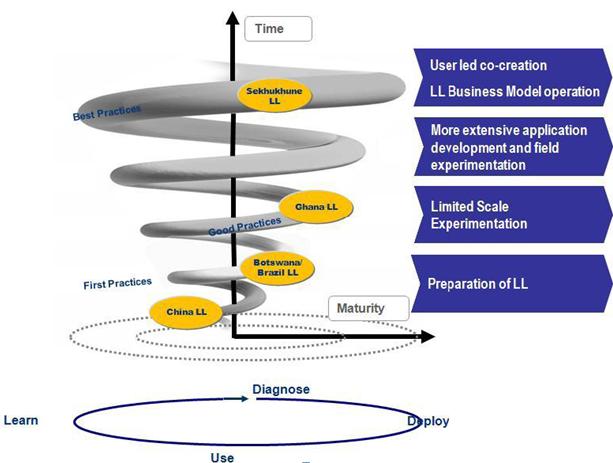The concept of a Living Laboratory or ‘Living Lab’ has had substantial documentation in research innovation literature and has proven to be a successful foundation of the urban simulation work in South Africa. The Department of Science and Technology (DST) funded Integrated Planning and Development Modelling (IPDM) Project was conceptualised in 2008 as a joint project between the Council for Scientific and Industrial Research (CSIR) and the Human Science Research Council (HSRC). One of the project components included the piloting of simulations for metropolitan regions in South Africa. The purpose of the Urban Simulation was to test various spatial policy scenarios in order to determine the likely future patterns of population growth, employment distribution, changes in land use and intensity – with the aim of enhancing understanding of local development trends as well as guiding future infrastructure plans and spatial development policies. The participation of metropolitan municipalities took the form of a series of interactive work sessions, called ‘Living Labs’. Click to read more...
At a basic level, a Living Lab provides a research methodology that is situated, focused and strategic; and which encourages joint learning. In this process, participation is open to multiple stakeholders: including:
All participants in the Living Lab process were expected to take responsibility for co-creation and co-ownership of products, services and or technology. Living Labs have further been described as both a methodology and a tool in developing innovation environments by fostering a sense of continuous learning and reflection - “learning by doing”. The common iterative process between developers and the end-users is central to ‘testing’ research products and or technologies, which is grounded in context. End users are able to provide real life experience and local knowledge to the benefit of adapting research innovation tools. After adaptation, developers are able to re-test their products or technology with end-users. In this manner, the living lab methodology is seen to be cyclical – with continuous adaptation through debate and learning.

For more information contact:
Quinton van Heerden, CSIR
qvheerden@csir.co.za